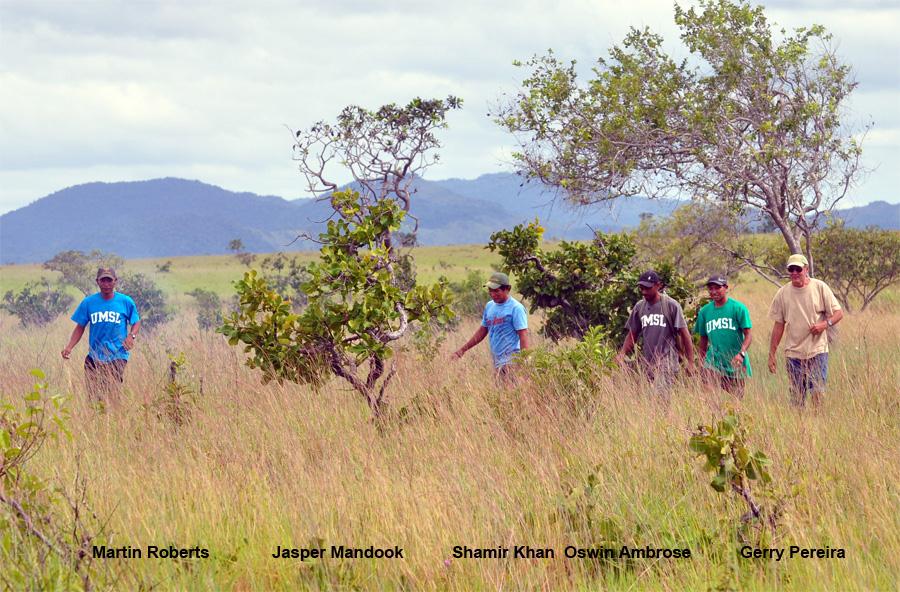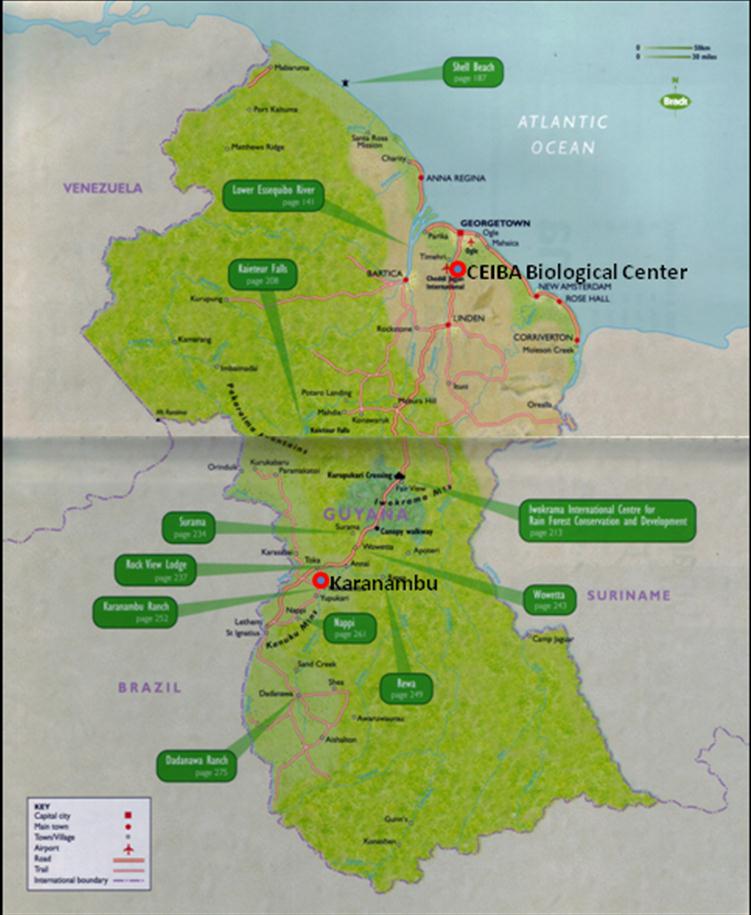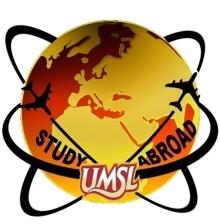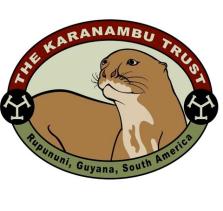Biodiversity course description & itinerary jan 13 (1)
BIODIVERSITY IN THE LAND OF THE MAKUSHIS:
Biodiversity and Community Based Ecotourism
Madewini River (CEIBA Biological Center), Guyana
Rupununi River (Karanambu Trust), Guyana
Faculty: Godfrey R. Bourne, PhD & Lucy Spelman, DVM
BIOL 4905X & 6905X (3 lab credits) STRUCTURE AND ITINERARY
2–19 January 2013
Students fly to Guyana on 2 January 2013
Program Description—Document northern Rupununi's biodiversity—flora, fauna, habitats, and
ecosystems—for future evaluation of human impacts (community based ecotourism and climate change).
Participants travel to Karanambu Trust on the Rupununi River to evaluate biodiversity in the forests,
savannas, and floodplains of the Rupununi from a scientific and journalistic point-of-view to produce a
PowerPoint Presentation and PowerPoint Poster (poster will be submitted in undergraduate research
symposium [URS] on Friday 26 April 2013; application deadline is first week of Spring Semester 2013) in
Guyana at Karanambu, and a ‘FIELD NOTES'-like article as it appears in National Geographic Research
& Exploration Journal with
References, due on 31 January 2013 (see PDF example); if well written,
Bourne may submit to an international journal "Contributions to the Study of Biological Diversity" for
possible publication.
Each student must study floral and/or faunal taxa. This course is not for
everyone—participants must be relatively healthy—expect living in close quarters, biting insects,
encounters with spiders, snakes, mud, travel in motorized boats, some physical exertion, fascinating
biodiversity, and bragging rights! Limited to
3-13 participants who must bear all program cost (board and
lodging in Guyana, and ground and air travel estimated at $1,700 + UMSL tuition and technology fees for
3 credit hours + airfare [estimate] $1200 + $100 [cash, spending money]), and have
a digital camera, and
laptop comuter with virus-free flash drive with 4-8 GB memory. Also bring a UMSL T-shirt (medium)
or your own university's T-shirt as appropriate, to share with your colaborator.
International Travel Instructions—BOOK YOUR OWN FLIGHTS soon after you've been accepted
into the program estimated at $1,200 for round-trip coach for STL to MIA to GEO. Fly on Wednesday 2
January and return on Saturday 19 January 2013. American Airlines AA 2515 St. Louis (STL) to Miami
(MIA) & AA 2007 Miami (MIA) to St. Louis (STL) Caribbean Airlines BW 483 Miami (MIA) to
Georgetown (GEO), one stop in Trinidad (POS); and GEO to POS on BW 484, change plane in Trinidad
but continue on BW 484 to Miami; MIA to STL on AA 2170. Remember on checking in on AA at STL,
check your luggage
all the way to Guyana (GEO) and you don't have to pay for luggage because you are
connecting on Caribbean Airlines to get to GEO! See below for attractive alternative.
Note that Travelocity has a cheaper flight (just under $900) on Delta for round-trip coach for STL to JFK
(in New York City) to GEO (Georgetown, Guyana). Fly on Wednesday 2 January and return on Saturday
19 January 2013. Delta Airlines 3291 St. Louis (STL) to J F Kennedy Airport (JFK) & Delta 363 to GEO.
Return GEO to JFK on Delta 364, and JFK to STL on Delta 6215. Remember on checking in on Delta at
STL, check your luggage
all the way to Georgetown, Guyana (GEO) and you may not have to pay for
luggage (not sure about this as I have not made the trip to Guyana on Delta before).
ITINERARY
Set up interviews with Bourne by calling his cell
314-709-9134; 14 Oct registration and $500 nonrefundable
deposit due; for application materials visit: http://www.umsl.edu/services/abroad/winter/guyana.html
Bourne travels to Guyana to oversee logistics for course and travels to Essequibo coast to record kiskadee vocalizations (28-30 December 2012).
Spelman travels to Guyana from Rhode Island via Miami &
Participants check in St. Louis at 04:00 am and fly
to Miami (MIA)
AA 2515 @ 06:05am;
check your luggage to Georgetown (GEO), Guyana; arrive Miami @
09:45am;
Check in at 12:00pm with Caribbean Airlines and fly
BW 483 @ 03:25pm; one stop in Trinidad
(POS), connect with
BW 1417 (09:50pm) arrive (GEO) Timehri International Airport @ 10:55pm – You will be
met by Bourne for 20 minute drive to CEIBA Biological Center at Madewini; eat snack, get settled in and try to
grab some ZZZZs (Day 1)
Breakfast @ 7:00am. Orientation @ 09:00am, lunch at Noon, practice censusing techniques 02:00-04:00pm, clean
up 04:00-06:00pm, and dinner @ 06:00pm at CEIBA;
Discussion of Individual Projects Each
Night After Dinner, 08:00pm night natural history walk (Day 2)
Breakfast @ 7:00am. Initiate PRACTICE biodiversity projects at CEIBA using visual and auditory methods; basics photographic workshop; talk to people about their use of biodiversity (medicines, food, fiber etc), subsistence farming, fishing and hunting, and schooling for their children (Day 3)
Breakfast @ 4:30am. Fly to Karanambu, pairing with Makushi collaborator and initiate biodiversity projects using visual and auditory methods; basics photographic workshop; talk to people about their use of biodiversity (medicines, food, fiber etc), subsistence farming, fishing and hunting, and schooling for their children (Day 4)
Breakfast @ 7:00am, continue projects at Karanambu; basics video workshop (Day 5)
Continue research activities at Karanambu (Day 6)
Continue research activities at Karanambu (Day 7)
Continue research activities at Karanambu (Day 8)
Continue projects, and begin to analyze data and prepare project as a PowerPoint Presentation (Day 9)
Continue research activities at Karanambu (Day 10)
Continue research activities at Karanambu (Day 11)
Continue research activities at Karanambu (Day 12)
Wrap-up projects, Pairs make PowerPoint Presentations after dinner to class and visitors (Day 13)
Fly to Georgetown, return to CEIBA; work on PowerPoint Posters (Day 14)
Day trip to coastal Guyana and Georgetown Bourne tapes kiskadee vocalizations; continue work on posters (Day 15)
Day trip to Parika on the Essequibo River; continue work on posters (Day 16)
Finish posters and pack for return trip to the USA (Day 17)
Participants return to USA.
Check in Georgetown at 03:30am and fly to Trinidad (POS) on BW 484 @
05:35am arriving @ 06:40am continuing on BW 484 @ 08:30am, arriving MIA 11:30am. Those returning to
STL, you are on AA 583 leaving at 03:00pm (so check in with AA by 1:30pm), arriving STL @ 04:50pm;
Bourne shuts down CEIBA (Day 18)
Bourne returns to USA (Day 19)
Manuscript submission for those wishing to publish papers in Contributions to the Study of Biological Diversity due (electronic submission of Word doc [Compatibility Mode]) to
[email protected]
You are required to produce a concise PowerPoint Presentation & PowerPoint Poster of your research
project detailing the results of your collaborative project, and produce a NG-like FIELD NOTES Research
and Exploration scientific article, these are due 31 January 2013. PLEASE DO NOT REQUEST
DELAYED GRADES. IF YOU DON'T HAVE YOUR US PASSPORT AS YET APPLY AS SOON AS
POSSIBLE. APPLICATIONS & ASSISTANCE AVAILABLE AT THE STUDY ABROAD OFFICE BUT
GENERALLY AVAILABLE AT THE POST OFFICE!
YOU BOOK YOUR INTERNATIONAL FLIGHTS! Costs are based on round trip coach from St. Louis
estimated at $1,200. For those not flying out of St. Louis you need to arrive in Guyana on 2 January also. Please
connect with Caribbean Airlines (BW 483 leaving MIA @ 03:25pm, this means that you should be in MIA by
12:25pm to easily make your flight). But see cheaper Travelocity option above! Disclosure on Plagiarism
It is against University of Missouri Policy to cheat or plagiarize by copying directly from books, technical
journals, magazines, manuscripts, proposals, blogs, websites, e-mails, or other persons' work without
attribution. Copying directly from any source other than your own work and citing the source does NOT
absolve you from plagiarism. When you write a paper, essay, or proposal you MUST use your own wording
and cite your source(s). Pay attention to my handout on writing, especially the section on what must be cited.
All students caught violating this code of ethics will fail that portion of the course that was abused. This
usually results in a failing grade for the entire course (when I was an undergraduate this always resulted in
expulsion from the institution). Your cell phones must be turned off during exams and under no circumstances
will you be permitted to answer phone calls. You will also not be permitted to leave or return to the classroom
during an exam for any reason, unless you first obtain permission from the primary instructor of the course.
IMPORTANT CONSIDERATIONS AND TIPS
The cost ($1,700 for 3–13 participants + UMSL tuition and fees for 3 credits) excludes round trip airfare from
STL (estimated at $1,200) or other US city of origin to MIA, covers airport exit tax from Guyana,
primitive accommodations (i.e., living in huts in the rainforest, cold showers with black-water from a spring, using
flushing outhouses etc.), all meals (multicultural Guyanese cuisine), day trips to Georgetown and Parika, small
plane trip in Guyana to Karanambu Trust.
It is prudent to have a minimum of US $100 in cash for your
own spending. We have worked hard to keep your costs close to 2009 levels.
Required Text
Bourne, G. R. & Bourne C. M. Eds. 2010. The CEIBA Reader. Yerfdog Publishing, St.
Louis, MO. (Price $25 DIGITAL on CD—Must be read).
Recommended Text
Kricher, J. C. 1997. A Neotropical Companion. Princeton University Press, Princeton.
(Pay special
attention to the Appendix that should be read with, spouses, significant others, parents
or guardians to fully appreciate benefits and costs of experiencing the Neotropics)
Censusing Techniques
Foster, M. S. Ed. 1994. Biological Diversity Handbook Series: Measuring and Monitoring Biological
Diversity (Standard Methods for Amphibians etc). Smithsonian Institution Press, Washington.
www.discoverlife.org for censusing and monitoring ideas.
Important Research Papers [EACH PARTICIPANT IS RESPONSIBLE FOR MAKING OWN COPIES]!
Kiss, A. 2004. Is community-based ecotourism a good use of biodiversity conservation funds? Trends
in Ecology and Evolution 19:232-237.
Wall, D., Mooney, H., Adams, G., Boxshall, G., Dobson, A., Nakashizuka, T., Seyani, J., Sampler, C.
& Sarukhan, J. 2001 An international biodiversity observation year. Trends in Ecology and Evolution 16:52-54.
Yoccoz, N. G., Nichols, J. D. & Boulinier, T. 2001. Monitoring of biological diversity in space and
time. Trends in Ecology and Evolution 16:446-453.
USEFUL JOURNALS FOR PREPARING YOUR FINAL ARTICLE:
National Geographic Research and Exploration; Ecology; Trends in Ecology and Evolution;
Conservation Biology etc.
BAGGAGE─You are each allowed
two checked bags on domestic flights connecting with Caribbean Air, the
sum of three outside dimensions of each bag must not exceed 62 ins. Total free baggage allowance is 100 lbs.
The weight of each bag must not exceed 50 lbs. Carry-on bags (TWO pieces only, one must be relatively
small) should not exceed 8x14x18 ins, and maximum weight of 12 lbs.
Check baggage to Georgetown
(GEO) on AA 2515 at St. Louis or other city of origin for automatic transfer to Caribbean Airlines BW
483! YOU ARE AMBASSADORS OF THE USA SO BEHAVE ACCORDINGLY—ABSOLUTELY NO
DRUG TRAFFICKING OR USE ON THIS TRIP. NO USE OF ALCOHOL. PLEASE KEEP
CIGARETTE SMOKING TO A MINIMUM, THERE WILL BE NO TRIPS TO THE STORE TO
PURCHASE CIGARETTES, AND DO NOT LITTER WITH BUTTS!!! IF YOU HAVE BODY
PIERCINGS WITH LOTS OF STUDS AND RINGS, PLEASE REMOVE THEM BEFORE ARRIVING
IN GUYANA (it makes getting through Guyana Immigration and Customs much easier). YOU CAN
REINCERT YOUR JEWELS ON ARRIVAL AT CEIBA.
YOU MUST HAVE A PRESCRIPTION FOR A MALARIA PROPHYLAXIS (LARIAM is no longer
effective and MALARONE is expensive, so if you can tolerate tetracycline get DOXYCYCLINE 100
mg/daily). CONTACT YOUR PHYSICIAN OR THE MEDICAL STAFF AT THE COUNTY
MEDICAL CLINIC by mid-November 2012 for immunization or boosters for flu, yellow fever,
tetanus/diphtheria, typhoid, measles/mumps/rubella, polio, hepatitis A (required) and B. If you plan to
work (handle) with bats you must be immunized for rabies. Check with Centers for Disease Control
(http://www.cdc.gov/travel/tropsam.htm
) or Hotline 404-332-4559 for needed immunizations and travel
tips.
ANNOTATED LIST OF CLOTHING AND SUPPLIES
Choose as Appropriate From the Following List
Items in
bold type are essential.
Sleeping pad (the type used for exercising will be adequate so don't
spend a lot of money for say a Thermorest Dreamtime @ $200) for use in tent-cots provided by
CEIBA;
2 bed sheet sets and pillow, and light blanket.
Sponge ear plugs (some of us snore and
roosters begin crowing at 1:30 am).
A Coleman camping fan for sleeping comfort is
recommended. NO SLEEPING in the rainforest per se (injury or death by falling branches or
trees too great).
Best to travel light, so bring a
diversity of quick drying clothing (Columbia Titanium & The
North Face, usually on sale at Sports Authority, are recommended
)—2 pairs field pants, shorts,
(cotton blend breathes & dries rapidly); a heavy long-sleeved shirt or lightweight sweater; several T-
shirts. Fast drying underwear; swim suit;
2 full sized sports towels and wash cloths; wet ones; toilet
articles (including enough sanitary pads/tampons to get you through your stay in Guyana [remember
we are going to be camping in the rainforest & savanna]). Raingear and/or folding umbrella, it's the
rainy season.
Shoes─lightweight rubber boots for wet sites. Tongs/flip-flops or beach socks for around camp,
general purpose lightweight hiking shoes or sneakers. Hat for rain and sun
(good sun block also).
Extra glasses, contacts, sunglasses etc.
Laptop computer/flash drive; From WalMart a
Black & Decker Ultra Bright LED Spotlight and/or
headlamp (Energizer Professional uses 2 or 3 AAA Batteries and is highly recommended
check low prices at Lowe's. Don't forget
extra batteries for nocturnal studies [frogging and batting]).
Pocket knife (must be packed in your checked luggage).
Digital Camera with built in flash (extra batteries), with adequate digital storage and USB cable for
down-loading your pictures,
binoculars, Neotropical plant, bird, fish, and mammal guides (if you
already own any).
Calculator. Reasonably water-tight container with silica gel packs for storing
moisture-sensitive supplies listed immediately above (Rubber-maid or Tupperware containers). Water
bottle/canteen, day pack,
lots of bug repellent. "
Rite in the rain field notebook" and pens,
multisubject notebook,
ballpoint pens, pencils, ruler, dissecting kit, hand lens.
PERSONAL MEDICAL SUPPLIES:
Any personal prescriptions (consult your physician—should include if possible a good pain killer such
as Tylenol II; Flagyl for acute amoebic dysentery, giardia, vaginal infections such as trichomonas; a
good broad-spectrum antibiotic such as Cipro, Tetracycline or Minocin for many common bacterial
infections), and over-the-counter medications you might need (among your favorites, I highly
recommend Benadryl for allergies, mosquito, black-fly, wasp and bee stings (pills, liquid, and/or
spray), Imodium A-D for diarrhea, Monistat, Monistat-Derm or equivalent cream for treating fungal
infections of the vagina, buttocks and skin; Desenex antifungal ointment for athletes foot [you are in
the moist tropics, fungus is everywhere, so be prepared]; New Skin antiseptic liquid bandage or
Bactine antiseptic and anesthetic for minor cuts, scratches and bruises), daily vitamins,
bee-sting kit
and breathing tube if allergic to wasp and bees, personal first-aid kit, and powdered
GatorAid (for rehydration if you come down with vomiting and diarrhea).
Personal candy, cookies, gum, and "snackos" (if desired).
TO AVOID SERIOUS INJURY OR WORSE FOLLOW ALL DIRECTIONS OF
YOUR INSTRUCTORS!! BE ALERT AND AWARE OF YOUR SURROUNDINGS
YOUR ADDRESS IN GUYANA:
CEIBA Biological Center, Madewini, Linden Highway (for filling out Guyana Immigration Form
issued on plane just after leaving Trinidad. Fill out before getting to Guyana). See
www.ceibabiologicalcenter.org for description of CEIBA Biological Center
Disclosure: because of inflation in Guyana you may have to contribute additional money to offset
travel and food costs in Guyana!
YOU CAN BE CONTACTED ON DAYS WE ARE AT CEIBA BY YOUR RELATIVES IN CASE OF AN
EMERGENCY BY THEM CALLING DR. BOURNE'S GUYANA CELL AT 011-592-671-4205 (Real
Emergencies Only).
Advice from the Folks at Karanambu
Contact information for parents/significant others if at Karanambu Trust, use Skype (easily downloaded on your computer) no video use (as it uses up the bandwidth) and for emergencies only. Karanambu also has a Skype phone but it is sporadic.
The internal flight …TGA has a serious weight limit. You weigh with your backpacks [body weight] and only allowed

25 lbs as free luggage.
Sleeping arrangements—we will not have beds by January. I think hammocks and nets may have to be bought in from Georgetown.
Stress the fact that Karanambu is very remote, and is also part of a community whose Amerindian inhabitants live there year- round, and also an ecolodge that may have guests. Karanambu is different in this respect from CEIBA. Your students will also have to travel with guides who would be their age or younger from the nearby villages.
If studies are progressing well we should certainly include a day or afternoon trip to Kwaimatta village. It would be an extra GY $1,000 for the village trip. I think a visit to the school to talk to the children is a must. They can sure use the exposure. Hope we can get some interaction. Please no piercings as the students will only stare and not speak.
Karanambu website: http://www.karanambutrustandlodge.org
Searching for grassland birds in the savannas of Karanambu

Locations of CEIBA
Biological Center on the Madewini River, a tributary of the Demerara River in the white sand belt of coastal Guyana and Karanambu Ranch on the Rupununi River in the North Rupununi savannas. In summary, this is a research course designed to teach immersion discovery to UMSL students—your task is to study, monitor, and map species distributions, and to share accurate digitized data for understanding and managing the conservation of impacted biota and ecosystems.


Diversity Indices
To make sense of your results we will use two diversity indices, species diversity (number of
species sampled) and Shannon-Weaver Index (Shannon & Weaver 1949; H/):
H/ = –Σpilognpi
where H/ is the amount of diversity in a group of S species, pi is the fraction of the whole sample composed of species I, and n is the base of logarithm used. Brower, J.E., Zar, J.H. & von Ende, C.N. 1997. Field and Laboratory Methods for General Ecology.
4th Edition. WBC McGraw-Hill, Boston, MA.
Shannon, C.E. & Weaver, W. 1949. The mathematical theory of communication. University of
Illinois Press, Urbana, Illinois.
Offered by
University of Missouri-St. Louis
Study Abroad Office, 261 Millennium Center
One University Boulevard
St. Louis, MO 63121-4400
Phone: 314-516-6983
Fax: 314-516-5636
Contact Amy M. Fillo: [email protected]
Study Abroad Coordinator
Contact Godfrey R Bourne: [email protected]
CELL: 314-709-9134
Lucy Spelman: [email protected]
CELL: 401 924 4994
Course Coordinators & Lecturers
Source: http://www.karanambutrustandlodge.org/projects/projects-2011/pdfs/biodiversity-course-description-itinerary-2013.pdf
Aprile, G. & C.Bertonatti. 1996. Manual sobre rehabilitación de fauna. Bol.Téc.FVSA, Buenos Aires. Boletín Técnico Nº 31 Manual sobre Rehabilitación de Fauna Proyecto Rehabilitación de Fauna del Programa Control del Comercio de Vida Silvestre Gustavo Aprile y Claudio Bertonatti FUNDACIÓN VIDA SILVESTRE ARGENTINA
CASE REPORT HUGE NODULAR GOITRE WITH RETROSTERNAL EXTENSION- A rare case report Raj Nagarkar1, Shirsendu Roy1, Mohammad Akheel2, Nayana Kulkarni3 1-Surgical oncologists 2-Senior Registrar, 3-Anesthetist, Dept of head & neck oncology services, HCG Curie Manavata cancer centre, Nashik, India. ABSTRACT:




